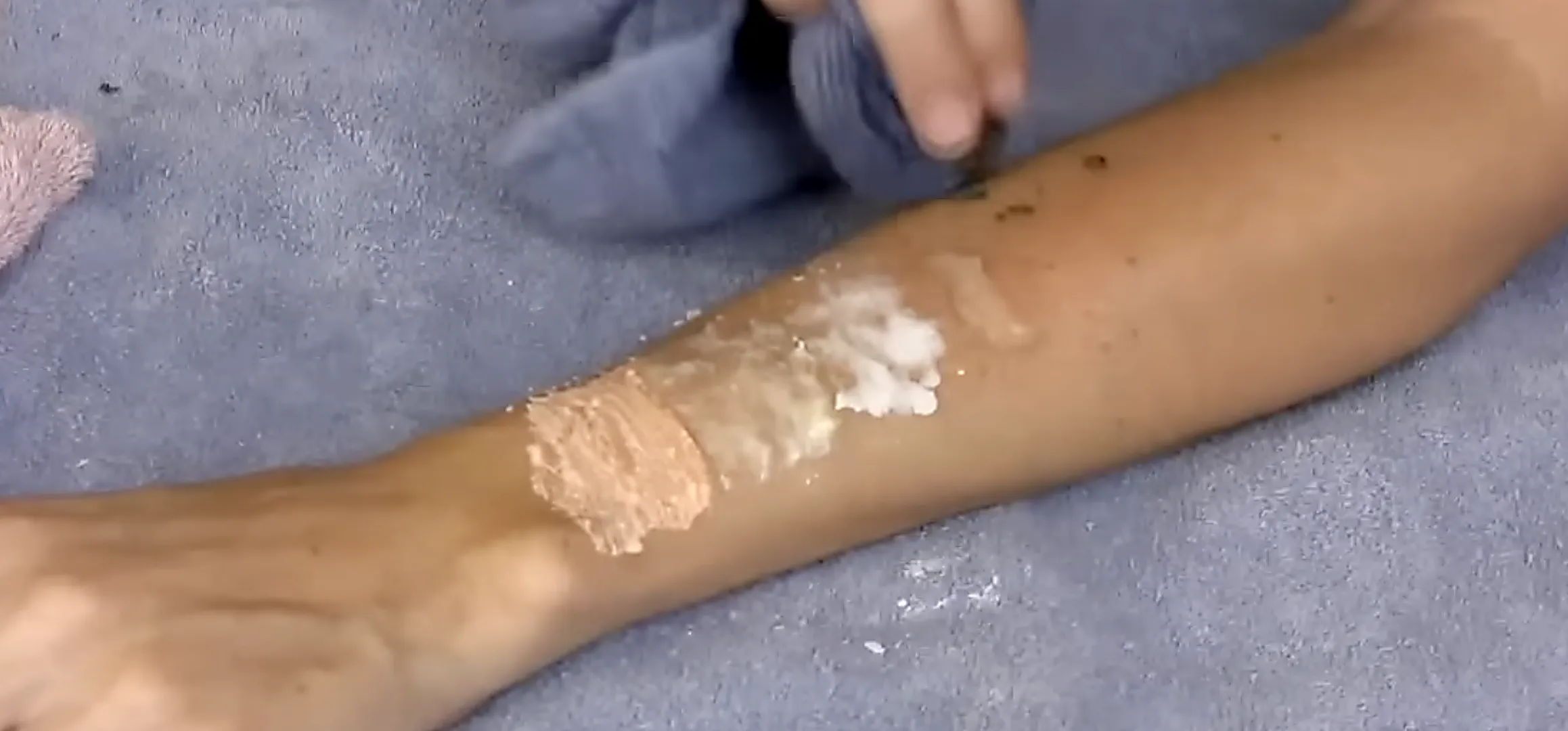In this article, I will be showing you how to make a crude form of aspirin from the bark of a willow tree. It is a great remedy for headaches, hangovers, and other minor pain. The use of the willow tree as a mild pain reliever goes back to the Native Americans, who used it in much the same way that I do.
Before we go any further, I am going to explain what we are making and how it differs from commercial aspirin. Commercial aspirin is a chemical called acetylsalicylic acid (say that one three times fast!). What we will be making is simply an herbal tea that contains salicylic acid, which is the raw material from which acetylsalicylic acid is made.
So, why do they convert it from the raw salicylic acid into the commercial form? Two reasons:
- It increases the shelf life of the medicine.
- Salicylic acid becomes dangerous to use if you concentrate it.
Pharmaceutical companies are not happy with just picking a leaf or cutting some bark from a tree...they like to concentrate everything and make it as potent as they can. If you do this with salicylic acid, it can cause stomach bleeding. But, as long as you use it in a natural, unconcentrated form (like the willow-bark tea we are going to make), it is perfectly safe. I have used it for years with no ill affects whatsoever.
So, now that you know what we are making, we can get to the process of making it.
Learn to Identify Willow Trees
One little thing about herbal medicine to remember: If you have any doubt about the identity of a plant, don't use it. NEVER use a plant medicine unless you are 100% sure you have the right kind of plant. Using the wrong kind of plant can result in illness and/or untimely death.
There are basically four types of Willow trees.
The Weeping Willow

The Black Willow

The Golden Willow

The White Willow
I believe this contains the most salicylic acid.

This is the species I use most of the time because it is very easy to find. As you can see from the picture, it always grows near the water. Also, I was told by some Cherokee folks that this kind of willow contains the most medicine. All the research I have done since then seems to confirm this.
All these species of tree contain the chemical we are looking for, in varying amounts. Although the white willow (or "creek willow" as some people call it) is the most potent, all of them will work.
So, how do you identify it for sure? well, first you will need to look at the leaves. They should look about like this:

Some of them are a little thicker, like this:

Now examine the bark. It should look something like the pictures below:
Now, at this point, I would break off some of the leaves and smell them. This is because I have used this plant for many years and I know its smell very well. You, however, do not know the smell that we are looking for. So, here's what I want you to do:
- Grab a handful of leaves, crush them up some, and smell them. I don't just mean take a quick sniff, I mean really take your time and make yourself familiar with that smell.
- Take pictures of the tree, and take some of its leaves with you.
Once you have done this, you are ready to verify the identity of your tree. The best way is simply to take your pictures and your samples to a professor of botany. If there is a university in your area, this should be no problem. If not, you can always email your pictures to the nearest one. If you are new to the study of plants, do not neglect this step. As I said before, ingesting random plants is a good way to die.
Once you have gotten a positive ID from an expert, you should be able to identify willow trees yourself from then on. Remember the smell particularly, as this is the best way I have found to identify a willow tree, even in winter when the leaves are gone.
Cut a Square of Bark
Once you are absolutely sure that you have found a Willow tree, you are ready to harvest the bark. Like all trees, the willow has an outer bark and an inner bark. The inner bark is what we want.
So, get a good sharp knife out and cut a square into the tree:

Make sure to cut it good and deep. Remember, you are trying to cut through both the outer bark and the inner bark. Go over your lines a few more times with your knife and deepen the cuts. If your knife has some saw teeth on it like mine does, this is a good time to use them.

Now, stick the point of your knife into one of the lines and gently pry outward.

Go around the whole square, gently prying outward so as to gradually pull your square away from the rest of the tree.




Remember not to pry too hard. If you do, you will just make the bark fly off in chunks, scattering the material that you are after. Instead, you want it to come off in one or a few large pieces.
So, keep going around the square, prying a little farther each time, until finally your square starts to come loose in the desired fashion.

Now, just keep doing what you've been doing. When three sides are lifted free, you can just peel it like this:

Notice that some of the bark is white, and some of it is pinkish. The pinkish bark is what we want. As you can see, my square has come off in two pieces, which is fine. Now let's just cut the last side off:

At this point, I still have some little shreds of pinkish bark clinging to the tree.

Of course, these need to be cut off as well. Cut or scrape off all the pinkish bark you can see. Here is what I ended up with:

Two big pieces and a few little shreds. Here is what the tree looked like:

Now, just in case you think that I have terribly damaged this tree, let me enlighten you. This little scar will heal rather quickly, and will not do any lasting harm to the tree whatsoever.
In case you don't believe me, check this out. This is a willow tree that I cut a square from, about six months ago:

As you can see, it is already healing up nicely. It has an ugly scar, but in time that will also be gone.
While we're on the subject, I want to talk about sustainable harvesting. When taking materials directly from nature, it is vitally important not to use more than you need. It is also vitally important to avoid destroying the source. In this case, you can avoid doing any harm to nature by following these two simple rules:
- Never take from the same tree twice in one year. In other words, whenever you take a square from a willow tree, you should not go back to that specific tree again for another year. This gives the trees time to heal themselves so that the stress upon them is minimized.
- NEVER cut a ring all the way around the bark. Just take a square about as big as your palm, that is all you need for a single dose. If you take too much bark at one time, it can kill the tree. If you cut out a ring around the tree, it will definitely kill it.
Now, just wrap your pieces of bark in a napkin and head home.
Making Willow Tea
This is, of course, a very simple and basic thing. First, put your pieces of bark on a coffee filter.

Now wrap it all up in a nice little bundle. Put this bundle on top of another coffee filter.

Wrap it up again, and secure it with a bread-bag tie.

You have now created a teabag. You don't really have to use two coffee filters, but I do. One filter will do it, but two will do it better.
Now, you just throw your teabag into a pot of boiling water just like any other teabag.

Stir it periodically, and keep an eye on the color of the water. It will slowly begin to take on a deep reddish-brown color, almost like the color of blood.

After about 20 minutes, the tea should be ready. Don't overcook it or you will burn the medicine out of it. Once it is done boiling, let it steep a few minutes.
Now you just have to filter out any remaining solids. There are many ways to filter a liquid, of course, but this is the way I do it.
First, I get my filtering screen. This was half of a device called a "tea ball":

It's just a fine metal screen. If you don't have one of these, a small cup with holes poked in the bottom will also work. I like this thing, though, because it fits neatly into a glass like so:

Once again, if you don't have anything like this, just put a small cup inside of a bigger cup, and make sure the smaller cup has many small holes in the bottom. I'm sure you can figure that out without a picture.
So, now we put another coffee filter into the screen:

And slowly pour the tea onto the filter as shown:

Pour it slowly so that it doesn't get clogged. If you think the filter is clogged, lift up the filtering container and look for the drip:

This one has stopped dripping, so I need to take the coffee filter in my hands and squeeze the liquid out, so that it drips into the glass.

Once you have squeezed all the liquid out, change filters and keep going until all the liquid has been filtered into your drinking glass. All you have to do now is add some sugar (if you want to) and drink the stuff.
You might be surprised when you find out that it tastes pretty good.

That's all there is to it. You just identify your tree, cut out a square of bark, make tea from it, and drink it.
As I said, this tea is excellent medicine for minor pains. I wouldn't recommend using it too often, as you can build up an immunity to it. I also would not recommend drinking more than one glassful at a time. As I said before, salicylic acid can be troublesome if you take it in large quantities, but you don't need to take it in large quantities, anyway. This one glass should be all you need. Of course, this crude aspirin is not that strong, as painkillers go.
If you are experiencing truly severe pain, this treatment probably won't make it go away (although it will probably help). This treatment will provide quick relief for minor aches and pains, just like its commercial counterpart, but it has the advantage of being 100% free and 100% natural.
I hope this little pearl of wisdom will be helpful to all of you in the future, when dopeheads have made it impossible for honest folk to get pain medicine.




























Comments
Be the first, drop a comment!